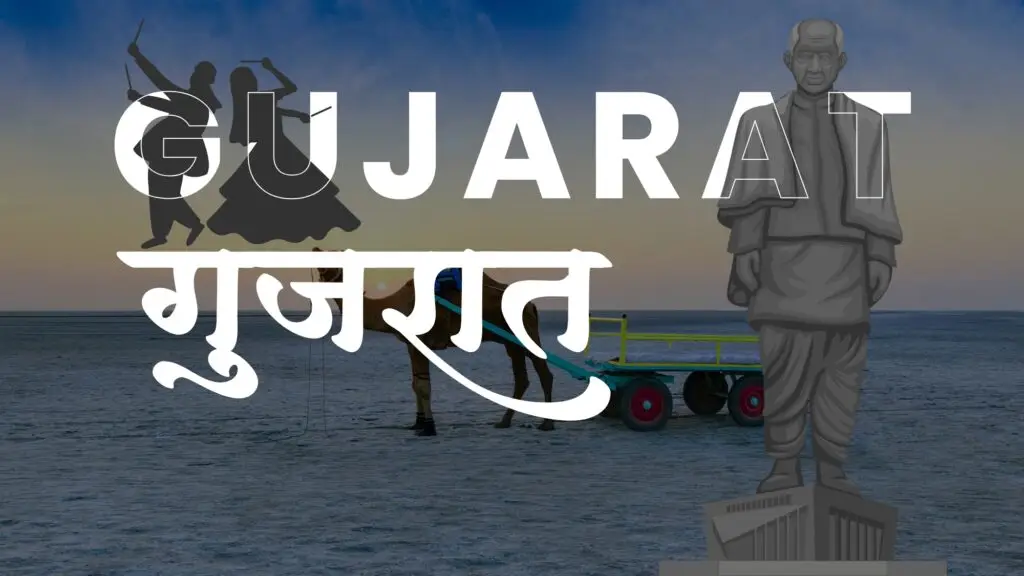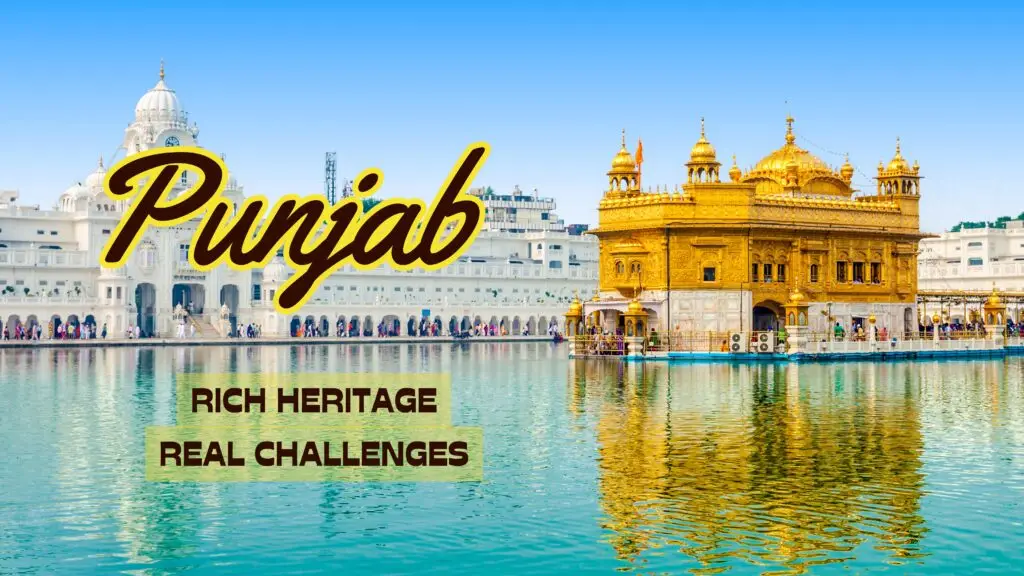Telangana is a state that perfectly blends ancient heritage with modern time. Formed relatively recently, it carries the weight of centuries of history, showcasing magnificent forts, unique architectural styles and a vibrant regional culture. Yet, it’s also a powerhouse of innovation, boasting a thriving IT sector, robust infrastructure and ambitious plans for the future. Telangana is a story of resilience, identity and rapid progress, making it a true gem in India’s diverse landscape.
Join us on a journey to explore Telangana, delving into its rich past, its dynamic present, and its promising horizon.

Telangana’s History
- Ancient Roots: The region has been inhabited since the Stone Age, with evidence of early settlements. It was historically part of major South Indian empires, including the Satavahanas, who established their capital at Kotilingala and fostered early Telugu culture.
- Kakatiya Glory: The Kakatiya dynasty (12th-14th centuries) is perhaps Telangana’s most glorious period. They built magnificent structures like the Warangal Fort and the iconic Thousand Pillar Temple. Their rule saw advancements in art, architecture and irrigation systems.
- Qutb Shahi and Asaf Jahi Dynasties: Following the Kakatiyas, the region came under the sway of the Bahmani Sultanate, which later fragmented into Deccan Sultanates. The Qutb Shahi dynasty (16th-17th centuries) established the city of Hyderabad and built architectural marvels like the Charminar and Golconda Fort. This period introduced Persian and Islamic influences. Subsequently, the Asaf Jahi dynasty, also known as the Nizams of Hyderabad, ruled for over two centuries, creating a wealthy and influential princely state known for its unique blend of Deccan and Mughal cultures.
- Formation of Telangana: After India’s independence, Hyderabad State initially remained independent but joined India in 1948. It was later merged into Andhra Pradesh in 1956. However, a long-standing movement for a separate Telangana state, driven by concerns over equitable resource distribution, identity and economic development, finally led to its formation on June 2, 2014, as the 29th state of India. This recent history of achieving statehood is a source of immense pride and shapes its current developmental drive.
Telangana’s Culture
Telangana’s culture is a blend of its Telugu traditions, its strong Islamic heritage and influences from its historical ties to Karnataka and Maharashtra.
- Language: Telugu is the official and most widely spoken language, with a distinct Telangana dialect. Urdu is also widely spoken, particularly in Hyderabad, reflecting its historical legacy.
- Festivals:
- Bathukamma: A unique and vibrant floral festival, predominantly celebrated by women, dedicated to the worship of the Goddess Bathukamma. It’s a key symbol of Telangana’s cultural identity.
- Bonalu: A traditional Hindu festival where Goddess Mahankali is worshipped, primarily in Hyderabad and Secunderabad, involving procession and offerings.
- Dasara (Dussehra), Diwali, Eid al-Fitr, and Christmas are also celebrated with great enthusiasm, showcasing the state’s religious harmony.
- Arts & Crafts:
- Bidriware: A unique metal handicraft from Hyderabad, involving intricate inlay work of silver on black metal (an alloy of zinc and copper).
- Pochampally Ikat: World-renowned for its intricate tie-and-dye weaving technique on silk and cotton, creating beautiful geometric patterns.
- Gadwal Sarees: Known for their rich silk body and contrast cotton borders.
- Dokra Metal Craft: Traditional bell metal craft from tribal areas.
- Cherial Scroll Painting: A traditional art form depicting stories from mythology and folklore, characterized by vibrant colors and a narrative style.
- Dance & Music: Telangana has rich folk dance traditions like Perini Sivatandavam (a powerful male dance from the Kakatiya period), Gussadi (performed by the Gonds), and Lambadi (by the Banjaras). Traditional music, often devotional or folk, plays a significant role in cultural expressions.
- Cuisine: Telangana’s cuisine is distinctive, with a greater emphasis on millets and spicier flavors compared to coastal Andhra cuisine. The influence of Hyderabadi cuisine is strong (see below).
Geography, Environment and Wildlife
Telangana is located on the Deccan Plateau, characterized by rolling terrain, rocky outcrops and extensive drylands. The state is semi-arid, with its rainfall dependent largely on the monsoon.
- Major Rivers: The Godavari and Krishna are the two major river systems that flow through Telangana, providing crucial water resources for agriculture and urban centers.
- Forests: The state has significant forest cover, particularly in the northern and eastern parts, home to diverse flora and fauna.
- Lakes: Numerous artificial lakes built during the Kakatiya and Nizam periods are important water bodies.
- Hyderabad: The capital city is situated on the Musi River and is known for its unique rock formations and urban lakes.
Despite its green cover and river systems, Telangana faces environmental challenges:
- Water Scarcity: While blessed with major rivers, equitable water distribution and sustainable groundwater management remain challenges, especially for agriculture during dry spells.
- Urban Pollution: Rapid industrialization and urbanization, particularly around Hyderabad, contribute to air and water pollution.
- Deforestation: Pressure from increasing population and development activities leads to deforestation in some areas.
The state government is actively involved in large-scale afforestation programs (like Haritha Haram), promoting sustainable water management (like the Kaleshwaram Lift Irrigation Project) and implementing stricter pollution control rules to protect its natural resources.
Hospitality and Tourism
Telangana offers a fascinating blend of historical glory, spiritual sanctity and modern urban experiences, supported by a growing hospitality sector that is known for its Deccan warmth.
- Historical & Architectural Gems:
- Hyderabad: The capital city is a treasure trove of historical sites. The iconic Charminar, the majestic Golconda Fort, the opulent Chowmahalla Palace.
- Warangal Fort: Remainders of the Kakatiya dynasty, featuring the impressive Kakatiya Thoranam and the Thousand Pillar Temple.
- Ramappa Temple: A UNESCO World Heritage Site known for its intricate carvings and ‘floating’ bricks.
- Spiritual:
- Bhadrakali Temple (Warangal): An ancient temple dedicated to Goddess Bhadrakali.
- Yadagirigutta: A major pilgrimage center dedicated to Lord Narasimha.
- Nature & Wildlife:
- KBR National Park (Kasu Brahmananda Reddy National Park): A small urban national park in Hyderabad.
- Nehru Zoological Park: A popular destination for families.
- Ethipothala Waterfalls: A picturesque waterfall on the Chandravanka River.
The hospitality sector in Hyderabad, in particular, has seen massive growth with numerous international hotel chains, convention centers, and restaurants, catering to both business and leisure travelers.
Telangana’s Taste
Telangana’s cuisine is a unique and robust blend, distinct from its neighboring states. It’s often spicier, with a generous use of chilies, tamarind, and sesame, and a strong emphasis on millets and local vegetables.
- Hyderabadi Cuisine: The royal legacy of the Nizams has given the world Hyderabadi Biryani, a globally celebrated rice dish known for its aromatic spices and tender meat (or vegetables). Other Hyderabadi delights include Haleem (a rich stew, especially popular during Ramadan), Mirchi ka Salan (chilli curry), and Double ka Meetha (bread pudding).
- Traditional Telangana Cuisine:
- Sarva Pindi: A savory pancake made from rice flour, chana dal, peanuts, and spices.
- Pachi Pulusu: A tangy, raw tamarind soup, often served cold.
- Gongura Mamsam: Mutton cooked with sorrel leaves, offering a unique tangy flavor.
- Jonna Roti (Sorghum flatbread) and Sajja Roti (Bajra flatbread) are common staples, replacing rice in many meals.
- Curries (Kura): Often made with seasonal vegetables and lentils, known for their spicy and tangy profile.
- Sweets: Besides traditional Indian sweets, Qubani ka Meetha (apricot dessert) is a Hyderabadi specialty.
Telangana is a state that embodies dynamism, innovation, and a profound connection to its past. Its grand historical monuments, vibrant cultural celebrations, and rapidly growing economy tell a compelling story of progress. Despite the challenges, the spirit of its people, coupled with visionary leadership, ensures that Telangana continues its unstoppable ascent, shining brightly as the true Deccan Gem in the heart of Incredible India.




